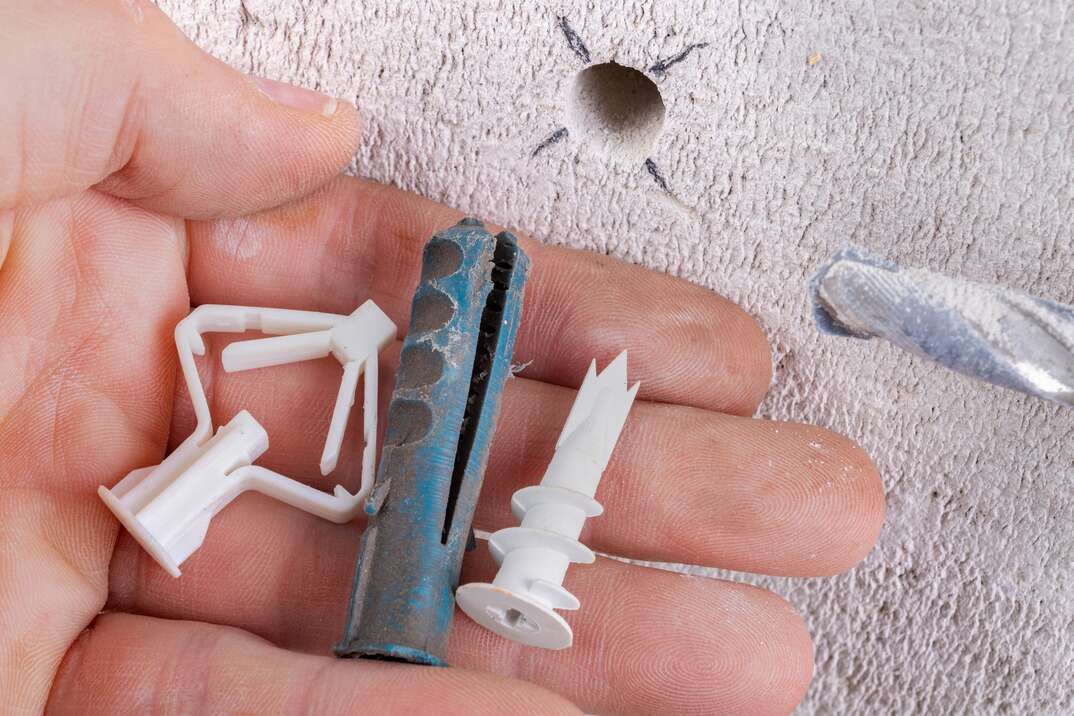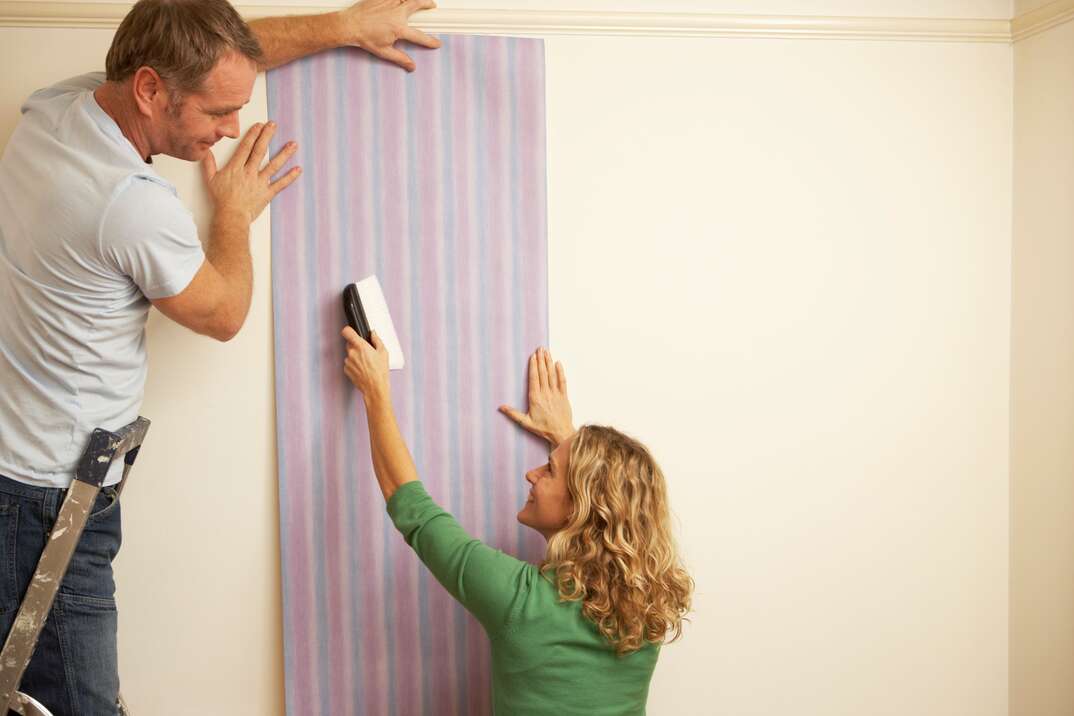Anchors, a Way: How to Properly Use Drywall Anchors

Installing Drywall Anchors at a Glance
- Step 1: Screw in drywall anchor
- Step 2: Screw anchor flush to wall
- Step 3: Screw fixture into drywall anchor
If you've ever screwed something to drywall only for it to crash down shortly after, you know just how important it is to use anchors to grip the drywall and secure your installation.
This May Also Interest You: How to Fix a Large Hole in Your Drywall
Below, we'll explain how to use drywall anchors and help you figure out how to pick the right one for your project.
 ----------------------------------------
----------------------------------------
Which Drywall Anchor Should I Choose?
Before choosing a drywall anchor, you need to know the weight of the item you intend to attach to the wall. Ensure that the drywall anchor you choose is strong enough to securely hold your shelf, rack or TV bracket. It's generally best to purchase a drywall anchor that includes the screws unless you already have a variety of sizes.
An alternative to a regular drywall anchor is a 3M Claw. This product is designed for hanging pictures and works differently from most drywall anchors because you don't need to screw it in. Instead, it has a hooked claw that you press firmly into the drywall using your thumbs.
Fortunately, many drywall anchor manufacturers make it easy to tell which product you should choose by listing the anchor's holding power on the packaging. If you can't see the weight limit on the label, use the guide below to help you decide which type you need.
Expansion Drywall Anchors
Expansion drywall anchors have a split shank that expands when you insert it into a drilled hole. You can then insert screws into the anchor, and the expandable shank will hold the item firmly in place. Expansion drywall anchors are generally suitable for small items weighing no more than 25 pounds, but the exact weight limit depends on the make and size. This type of drywall anchor isn't suitable for use in ceilings.
Threaded Drywall Anchors
This type of drywall anchor has a threaded shank that you can screw directly into the drywall. When you put a screw into the anchor, it causes barbs at the end of the shank to expand, giving it a strong purchase on the drywall. Depending on which size you choose, a threaded drywall anchor can support up to 75 pounds.
Molly Bolts
Molly bolts have sharp points that press outwards when you insert a screw to allow it to grip the drywall. You'll need to drill a pilot hole before installing a molly bolt, and it should hold up to 55 pounds depending on the make and size. Molly bolts are unique among drywall anchors because you can remove the screws and reinsert them later without needing a new anchor. Therefore, it's a good choice for fixtures that you might want to update in the future.
Toggle Bolts
Toggle bolts are the most heavy-duty drywall anchors available, and large metal toggle bolts can be used to hang items weighing up to 100 pounds. To use a toggle bolt, you need to drill a hole three times its size. When you insert the toggle bolt, two wings at the end of the shank slide along the back of the wall to hold it in place.
More Related Articles:
- How to Fix Nail Holes in Walls: A 7-Step Guide
- How Much Does Drywall Cost?
- Walls Looking Worse for Wear? Follow This 5-Step Wall-Washing Guide
- How to Mount a Flatscreen TV to a Wall
- How to Install Floating Shelves (It’s Not as Hard as It Looks)
How Do You Use Drywall Anchors?
Before you start, read through the following instructions that come with your set of anchors. Although the installation process is slightly different for each anchor type, this step-by-step guide focuses on threaded drywall anchors. A threaded anchor should be strong enough for most household uses.
Step 1: Screw in the Drywall Anchor
Mark the point where you want your drywall anchor to go and screw it into the drywall using a screwdriver. There's no need to drill a pilot hole for a threaded drywall anchor. You shouldn't need to press too hard, but try to keep the pressure consistent. Otherwise, the anchor will rotate inside the drywall and cause it to crumble.
Step 2: Screw the Anchor Flush to the Wall
Continue to screw your drywall anchor into the wall until the head is completely flush to the wall. If the anchor head is protruding slightly, screw it in a little further. However, it's important to avoid screwing it in deeper than the wall's surface.
Step 3: Screw Your Fixture Into the Drywall Anchor
Place your screw through the hole on the bracket of your fixture, then insert the screw into the drywall anchor. Screw it in tightly. This will cause the wings on the end to flare and give the wall anchor a secure purchase.
Do Drywall Anchors Go Into Studs?
Studs are vertical wooden beams that sit behind drywall for support. If you want to hang a picture or shelf on the part of the wall in front of a stud, there's no need to use a drywall anchor. Use a drill to create a pilot hole, then insert your screw.
You can generally tell where some of the studs in a room are located because they tend to support electrical outlets and switches. You can double-check by removing the cover plate to see if there's a stud sitting behind it. Alternatively, you can use a stud finder sensor to locate the stud. If you want to hang something on a part of the wall without a stud, you'll need a drywall anchor.


